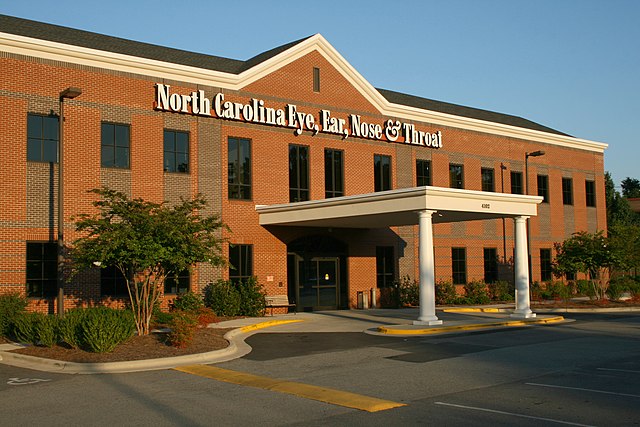A health facility is, in general, any location where healthcare is provided. Health facilities range from small clinics and doctor's offices to urgent care centers and large hospitals with elaborate emergency rooms and trauma centers. The number and quality of health facilities in a country or region is one common measure of that area's prosperity and quality of life. In many countries, health facilities are regulated to some extent by law; licensing by a regulatory agency is often required before a facility may open for business. Health facilities may be owned and operated by for-profit businesses, non-profit organizations, governments, and, in some cases, individuals, with proportions varying by country. See also the recent review paper,
Hartford Hospital in Hartford, Connecticut. A hospital is one common type of health facility.
An eye, ear, nose, and throat clinic in Durham, North Carolina, illustrating a common smaller facility.
Health care, or healthcare, is the improvement of health via the prevention, diagnosis, treatment, amelioration or cure of disease, illness, injury, and other physical and mental impairments in people. Health care is delivered by health professionals and allied health fields. Medicine, dentistry, pharmacy, midwifery, nursing, optometry, audiology, psychology, occupational therapy, physical therapy, athletic training, and other health professions all constitute health care. The term includes work done in providing primary care, secondary care, and tertiary care, as well as in public health.
Graphic of hospital beds per 1,000 people globally in 2013, at top; NewYork-Presbyterian Hospital in New York City, a hub for health care and life sciences, is one of the world's busiest hospitals, below. Pictured is its Weill Cornell facility (white complex at the center).
Primary care may be provided in community health centers.
The emergency room is often a frontline venue for the delivery of primary medical care.
Hospital train "Therapist Matvei Mudrov" in Khabarovsk, Russia






